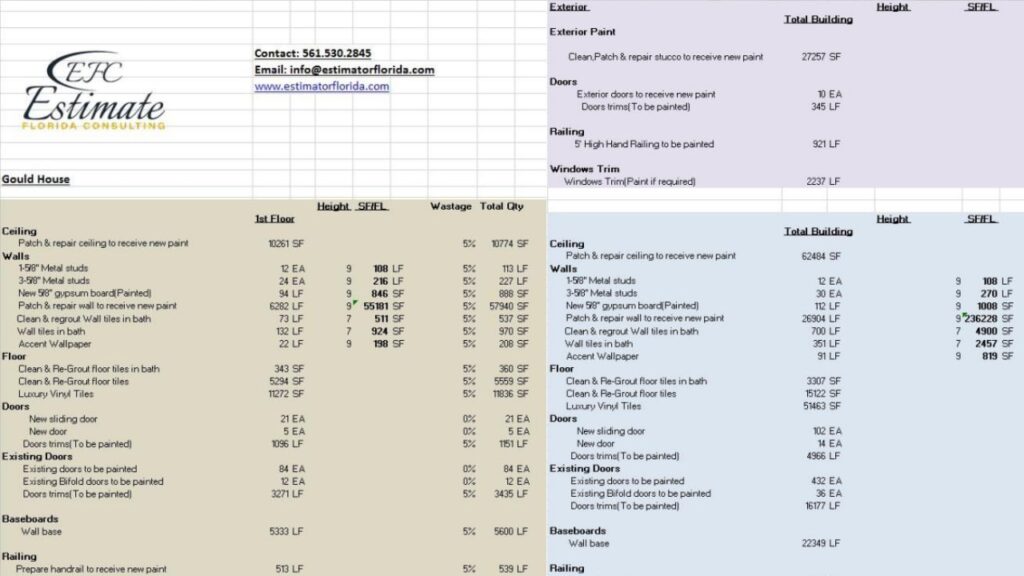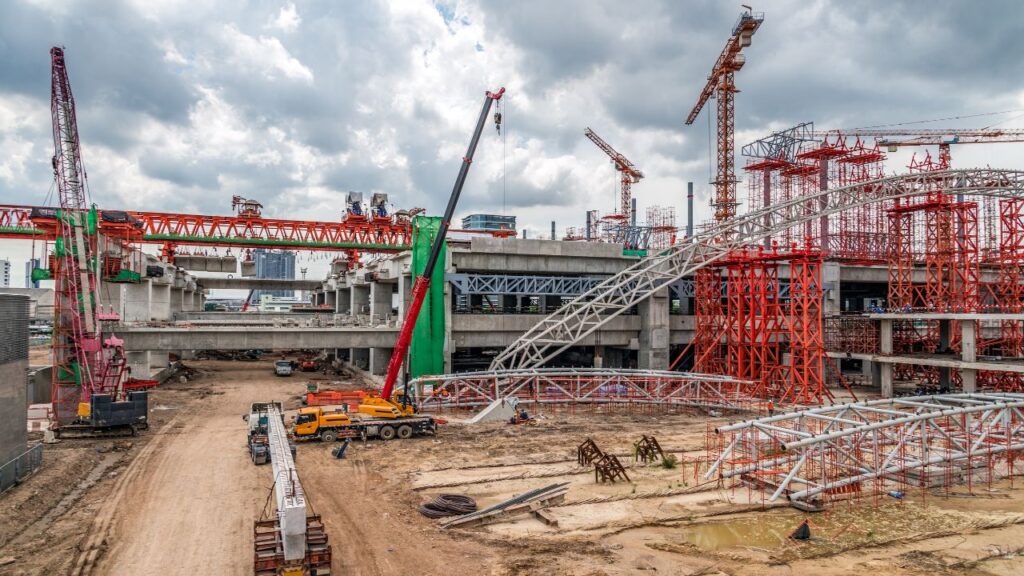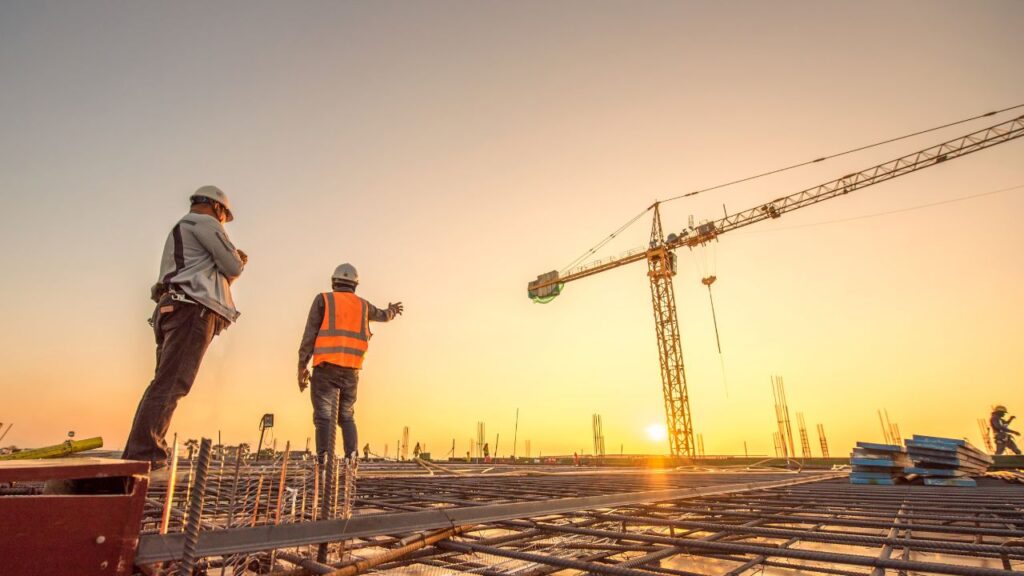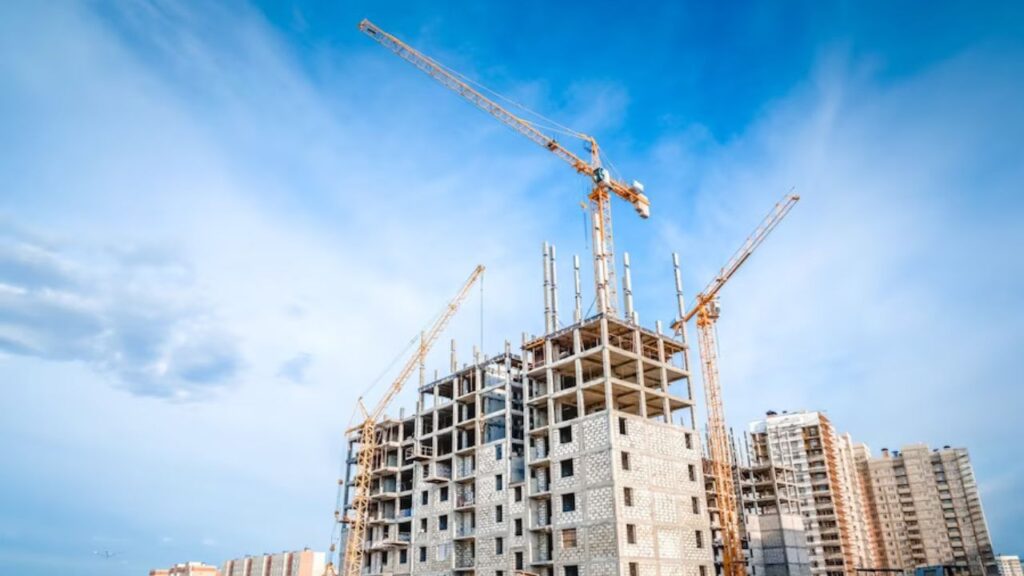A Wining Cost Estimate That Helps You To Win More Construction Projects

Embarking on a commercial construction project is an emotional journey that demands careful consideration of costs. Understanding and managing commercial construction costs can be a daunting task, but it is essential for the success and financial stability of your project. In this comprehensive guide, we will delve into the intricacies of commercial construction costs, exploring the factors that influence them, the emotional significance they hold, and the strategies for estimating and managing costs effectively. By the end, you will have gained valuable insights that will empower you to navigate the complex world of commercial construction costs with confidence and clarity.

Commercial construction costs encompass the financial aspects of building commercial structures, such as offices, retail spaces, and industrial facilities. These costs go beyond the mere expenses of materials and labor; they reflect the value and emotional significance of creating a space that can drive business growth and fulfill aspirations.
To comprehend commercial construction costs, it is crucial to recognize the various components involved. These costs include materials, labor, permits, equipment, design fees, insurance, and more. Understanding the intricate details of each cost element will enable you to develop a comprehensive and accurate budget.
Every dollar spent on your project carries a wave of emotions, representing your aspirations, sacrifices, and unwavering determination. It’s not merely about the monetary value; it’s about the emotional investment you make in transforming your dreams into reality.
Imagine the joy that fills your heart as you watch the foundation being laid, symbolizing the solid groundwork on which your dreams will stand. Picture the excitement of seeing the walls rise, envisioning the spaces where cherished memories will be created. Each dollar spent holds the potential to evoke a myriad of emotions, turning your project into a vessel that carries your hopes and aspirations.

Commercial construction costs are influenced by several factors, each with its own emotional implications. These factors include:
The location of a commercial project holds emotional significance as it determines accessibility, visibility, and potential customer reach. Factors like land acquisition costs, site conditions, and infrastructure availability in the chosen location can significantly impact construction costs.
The size and complexity of a commercial project evoke emotions of ambition, vision, and challenge. Larger projects or those with intricate designs and unique features often require additional resources, specialized expertise, and careful planning, resulting in higher construction costs.

Materials and labor costs trigger emotions of quality, craftsmanship, and reliability. The selection of materials and the availability of skilled labor can significantly influence construction costs. Factors such as material prices, market demand, and labor shortages or surpluses can impact the overall project budget.
Regulatory requirements encompass emotions of compliance, safety, and accountability. Building codes, permits, inspections, and compliance with environmental and safety standards are essential aspects of commercial construction. Ensuring adherence to these requirements adds to the overall project costs.
Commercial construction costs can be broken down into various components. Understanding these cost categories helps stakeholders allocate budgets and monitor expenses effectively. Some common cost breakdowns include:
Land acquisition, site preparation, and development expenses encompass costs associated with acquiring the land, conducting surveys, clearing and leveling the site, and preparing it for construction. Factors such as site accessibility, soil conditions, and infrastructure availability impact these costs.
Foundation and structural costs include the construction of the building's foundation, structural framing, and load-bearing components. Expenses for materials, labor, engineering services, and specialized equipment contribute to these costs. The complexity of the structure and the soil conditions affect foundation and structural expenses.
The building envelope comprises exterior walls, windows, roofing, and insulation, while interior finishes encompass elements like flooring, ceilings, partitions, and fixtures. Costs for building envelope and interior finishes depend on material selections, desired aesthetics, functionality requirements, and customization preferences.
MEP systems encompass the installation of mechanical, electrical, plumbing, and HVAC systems. These systems are critical for the functionality, comfort, and safety of commercial buildings. Costs for MEP systems vary depending on building size, complexity, energy efficiency goals, and technological requirements.
Maximize your construction business’s potential with our competitive financing options

Preliminary cost estimation involves conducting a high-level assessment based on project scope, historical data, and industry benchmarks. It provides an initial budgetary framework and helps stakeholders gauge the feasibility of the project.
Detailed cost estimation delves deeper into project requirements, taking into account specific materials, labor, equipment, and other cost components. This method requires meticulous analysis and consultation with industry professionals to provide a more accurate project budget.
Value engineering involves finding creative solutions to optimize costs without compromising quality or functionality. It evokes emotions of innovation, efficiency, and resourcefulness. By analyzing project components and exploring alternatives, value engineering can help achieve cost savings while maintaining project objectives.
Accurate cost estimation is a crucial step in commercial construction, evoking emotions of precision, thoroughness, and confidence. Several methods can be employed to estimate costs effectively:
Preliminary cost estimation involves conducting a high-level assessment based on project scope, historical data, and industry benchmarks. It provides an initial budgetary framework and helps stakeholders gauge the feasibility of the project.
Detailed cost estimation delves deeper into project requirements, taking into account specific materials, labor, equipment, and other cost components. This method requires meticulous analysis and consultation with industry professionals to provide a more accurate project budget.
Value engineering involves finding creative solutions to optimize costs without compromising quality or functionality. It evokes emotions of innovation, efficiency, and resourcefulness. By analyzing project components and exploring alternatives, value engineering can help achieve cost savings while maintaining project objectives.
Managing commercial construction costs is a delicate balancing act, stirring emotions of control, adaptability, and resilience. Several strategies can aid in effective cost management:
Setting realistic budgets requires a blend of realism and optimism. It involves considering the project's scope, timeline, market conditions, and potential risks. By establishing clear financial boundaries from the outset, stakeholders can make informed decisions and avoid financial strain.
Controlling costs throughout the project elicits emotions of vigilance, diligence, and accountability. It involves monitoring expenses, tracking project progress, and making timely adjustments when necessary. By maintaining transparent communication, adhering to budgetary constraints, and addressing cost overruns proactively, the project can remain financially stable.

Commercial construction projects are prone to changes and unforeseen challenges, evoking emotions of flexibility, problem-solving, and perseverance. Adapting to changes in project scope, market conditions, or regulatory requirements requires effective communication, collaboration, and a willingness to adjust the budget plan accordingly.
Commercial construction costs have a profound impact on various aspects of a project. Emotionally, it influences stakeholders’ confidence in the project’s feasibility and success. Financially, it determines the return on investment, cash flow management, and long-term profitability. Moreover, it affects the quality, functionality, and aesthetics of the commercial space, evoking emotions of pride, satisfaction, and customer satisfaction.
Accurate material estimation is the backbone of successful construction projects. By implementing the techniques and strategies outlined in this guide, you can enhance your material estimation process, outrank other websites, and establish yourself as a go-to resource in the field. Remember, precise estimations lead to cost savings, improved project timelines, and ultimately, client satisfaction. Stay ahead of the competition by embracing the power of accurate material estimation!
We hope this article has provided you with valuable insights into material estimation for construction projects. For any further queries or assistance, feel free to reach out to our team at Estimate Florida Consulting. Happy estimating!
The cost ranges for commercial construction projects can vary significantly depending on factors such as project scope, size, location, and desired quality level. It is advisable to consult with construction professionals and obtain detailed cost estimates tailored to specific project requirements.
The duration of commercial construction projects varies based on project size, complexity, and scope. Factors such as design development, permitting processes, availability of materials, and unforeseen challenges can impact project timelines. It is essential to establish realistic project schedules and account for potential delays.
Yes, it is possible to reduce commercial construction costs without compromising quality. Engaging in value engineering, exploring cost-saving alternatives, and implementing efficient project management practices can help optimize expenses while maintaining project objectives.
Commercial construction costs can impact project timelines by influencing the availability of funds, resource allocation, and the speed of procurement. Delays in budget approval or unexpected cost escalations can prolong the project’s duration.
Yes, several cost-saving measures can be implemented in commercial construction projects, such as value engineering, efficient material procurement, effective project scheduling, and maximizing resource utilization.
Here I am going to share some steps to get your construction cost estimate report.
You can send us your plan on info@estimatorflorida.com
Before starting your project, we send you a quote for your service. That quote will have detailed information about your project. Here you will get information about the size, difficulty, complexity and bid date when determining pricing.
We do construction cost estimating and prepare a detailed report for your project. At last you finalize the report and finish the project.
561-530-2845
info@estimatorflorida.com
Address
5245 Wiles Rd Apt 3-102 St. Pete Beach, FL 33073 United States
561-530-2845
info@estimatorflorida.com
Address
5245 Wiles Rd Apt 3-102 St. Pete Beach, FL 33073 United States
All copyright © Reserved | Designed By V Marketing Media | Disclaimer
IMPORTANT: Make sure the email and cell phone number you enter are correct. We will email and text you a link to get started.
By clicking “I Agree” above you give Estimate Florida Consultin express written consent to deliver or cause to be delivered calls and messages to you by email, telephone, pre-recorded message, autodialer, and text. Message and data rates may apply. You are able to opt-out at any time. You can text STOP to cancel future text messages.